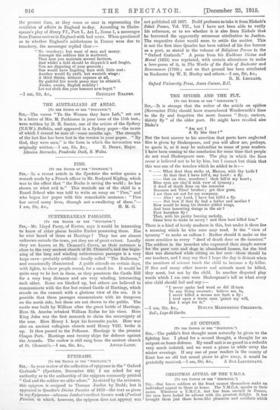EPIGRAMS.
]To TUE EDITOR OF TOE " SPECTATOR.") Snl,—In your review of the collection of epigrams in the " Oxford Garlands " (Spectator, December 4th) I am asked for my authority as to the authorship of the epigram commonly printed " God and the soldier we alike adore." As stated by the reviewer, this epigram is assigned to Thomas Jordan by Dodd; but it appeared in Quarles's Divine Fancies of 1632--the text as given in my Epigrams—whereas Jordan's earliest known work (Poetical Fancies, in which, however, the epigram does not appear) was not published till 1637. Dodd professes to take it from Nichols's Select Poems, Vol. VII., but I have not been able to verify his reference, or to see whether it is also from Nichols that he borrowed the apparently erroneous attribution to Jordan. The respective dates would seem to settle the matter. This is not the first time Quarles has been robbed of his duo honour as a poet, as stated in the volume of Religious Poems in the " Oxford Garlands." A poem from his Emblems Divine and Moral (1635) was reprinted, with certain alterations to make a love-poem of it, in The Works of the Earls of Rochester and Roscommon (1709) ; and on that ground has been attributed to Rochester by W. E. Henley and others.—I am, Sir, &o.,


































 Previous page
Previous page